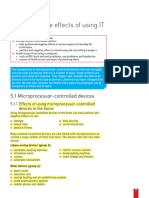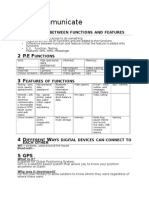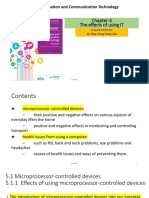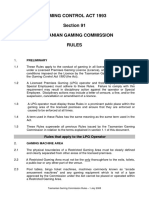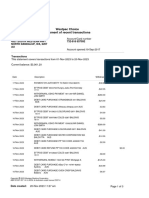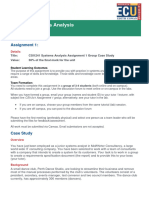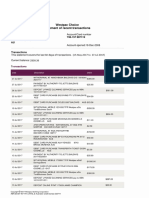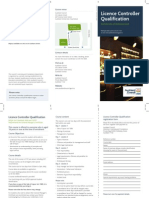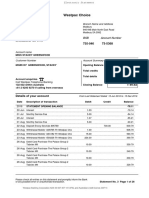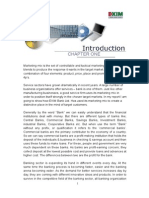0% found this document useful (0 votes)
17 views27 pagesEffects If Using IT Word Document
The document discusses the positive and negative impacts of microprocessor-controlled devices on various aspects of life. It covers how such devices can make tasks easier but also increase dependency, raise privacy concerns, and be costly to repair. Both benefits and risks are outlined for areas like physical fitness, security, social interaction, leisure time, transportation, and autonomous vehicles.
Uploaded by
epicster721Copyright
© © All Rights Reserved
We take content rights seriously. If you suspect this is your content, claim it here.
Available Formats
Download as PDF, TXT or read online on Scribd
0% found this document useful (0 votes)
17 views27 pagesEffects If Using IT Word Document
The document discusses the positive and negative impacts of microprocessor-controlled devices on various aspects of life. It covers how such devices can make tasks easier but also increase dependency, raise privacy concerns, and be costly to repair. Both benefits and risks are outlined for areas like physical fitness, security, social interaction, leisure time, transportation, and autonomous vehicles.
Uploaded by
epicster721Copyright
© © All Rights Reserved
We take content rights seriously. If you suspect this is your content, claim it here.
Available Formats
Download as PDF, TXT or read online on Scribd
/ 27





















